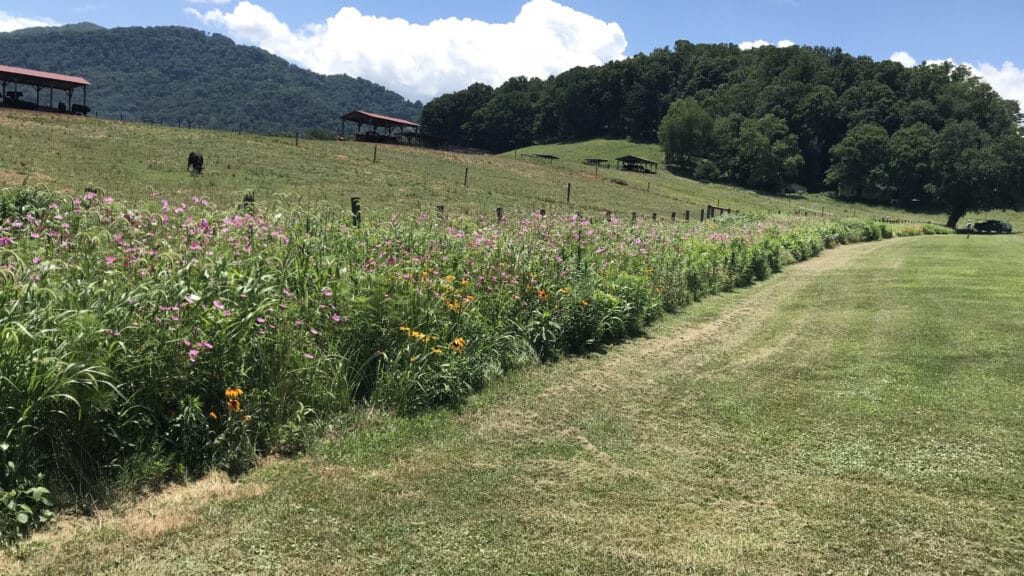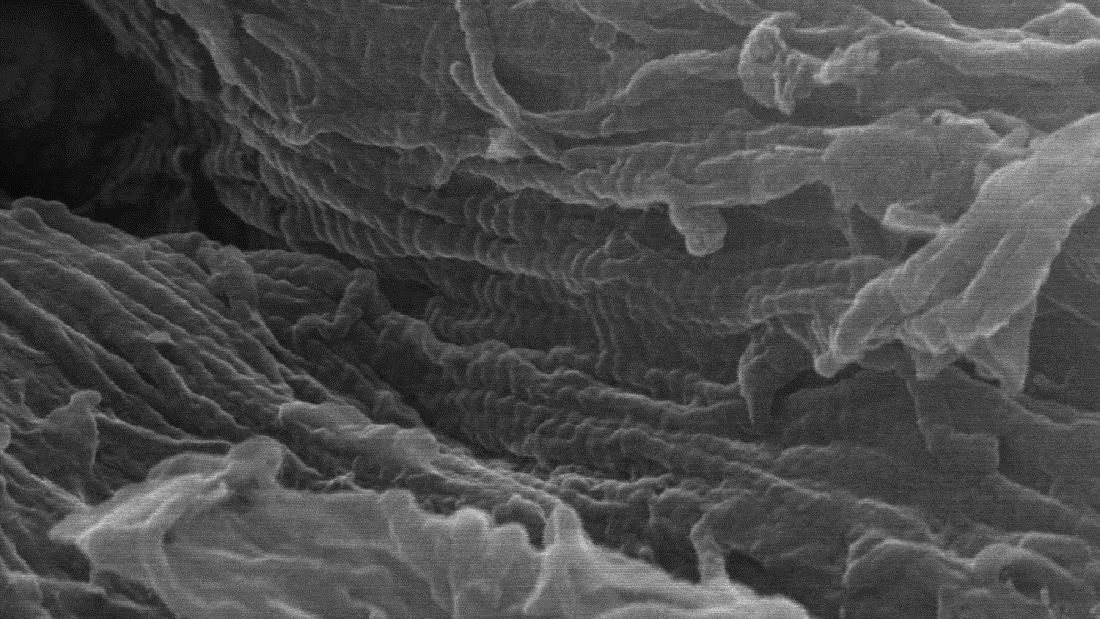N.C. Effort to Help Pollinators Shows Successes, Limitations

For Immediate Release
Although not quite the bee’s knees, a three-year effort to conserve bee populations by introducing pollinator habitat in North Carolina agricultural areas showed some positive effects, as bee abundance and diversity increased in the studied areas.
But results of a study examining the program’s effectiveness also showed that the quality of the habitat played a key role in these positive effects, and that habitat quality could be impacted by the way the areas are maintained over time.
North Carolina State University researchers studied the effects of a N.C. Department of Agriculture program that installed pollinator-friendly flowers on 16 agricultural research stations from the mountains to the coast in 2016-18. Mixtures of planted bee-friendly flowers were evaluated for their effectiveness in supporting bee populations – with the goal of increasing the abundance and diversity of bees.
Honey bee specialist David Tarpy, University Scholar Professor and extension apiculturist at NC State and a co-author of a paper describing the research, recalled thinking that the program was a unique opportunity to study government-led conservation efforts. “We should get in on the ground floor and measure this and see if it has an effect from day 0, not after the fact,” he recalls.
“We didn’t want to let that ‘natural laboratory’ opportunity pass without actually recording the data,” added Hannah Levenson, a postdoctoral research scholar at NC State and corresponding author of the paper.

Researchers visited all 16 sites four times each year and caught bees in nets and in cups – called bee bowls – that were painted to mimic the UV reflection of flowers. In all, the researchers collected more than 16,000 bees from 128 different bee species.
Results showed bee abundance increased over time, with more bees collected in 2018 than in 2016. Meanwhile, the diversity of species increased in 2017 and then dropped slightly in 2018, although both years showed large improvement over 2016.
“We were really happy to see increases in the abundance and number of bee species found over time,” Levenson said. “It was also exciting to see how many species we documented, especially for studying one kind of habitat. This study was limited to agricultural areas but we still found nearly 130 bee species.”
The study also showed, though, that the quality of flowers was a key driver of bee abundance and diversity, with areas of higher flower quality attracting more bees and more bee species. Poorly maintained areas with degraded flowers, weeds and grasses lagged behind in bee collection.
“North Carolina has 564 species of bees and they have very different life cycles from each other,” Levenson said. “Some are active in early spring when flowers are just starting to come up. Other species are active in summer. The end of summer is when most bee species are active but have the fewest resources available – it’s called the dearth. So it’s important to develop seed mixes that bloom across the seasons so we can support as many of North Carolina’s bees as possible.”
Levenson said there were a few surprising findings, including a few bee species showing up in unexpected areas.
“We found some specialist bees in places you wouldn’t expect,” Levenson said. “There were no squash plants in our plots, but we found squash bees. It is encouraging that these planted habitats can provide some level of support to specialist species such as this that are economically important pollinators.
“We also found a particular bumble bee – Bombus pensylvanicus – that is under review for potential addition to the endangered species list,” she added. “We found a high abundance of them, so it’s possible that they’re attracted to agricultural areas more than other areas. We submitted the data to Fish and Wildlife so it can be used to help make the decision on whether it should be listed as endangered or not.”
Levenson said that the program examining the effects of adding pollinator habitat at scale was prescient.
“I want to give credit to the NCDA. To our knowledge it was the first government organization to do test plots like these, and hopefully what we found could encourage more government programs to take actions to protect the environment,” she said. “Even though the habitats weren’t perfect, they still made a difference.”
The researchers hope that further studies like this one can be performed in different types of habitats, like forests or urban areas, to capture a wider sense of bee populations in North Carolina.
“No matter the landscape, we’ve shown that maintenance and monitoring are important to efforts like these,” Tarpy said.
Funding was provided by the N.C. Dept. of Agriculture, the N.C. Beekeepers Association and NC State.
-kulikowski-
Note to editors: The abstract of the paper follows.
“Planted pollinator habitat in agroecosystems: how does the pollinator community respond?”
Authors: Hannah K. Levenson and David R. Tarpy, North Carolina State University
Published: Feb. 23, 2023 in Frontiers in Ecology and Evolution
DOI: 10.3389/fevo.2023.1060834
Abstract: Pollinators are important both ecologically and economically. Nonetheless, documented pollinator population decline threatens ecosystem functioning and human well-being. In response, conservation methods such as augmented pollinator habitat are becoming popular tools to combat pollinator losses. While previous research has shown added habitat can benefit bee communities, there are still aspects of the habitat implementation that require further research, particularly how this will impact bee communities in real-world settings beyond researcher-led efforts. In our study, we use a 2016 initiative mandating the planting of pollinator habitat on research stations across North Carolina, USA to act as an outdoor laboratory to investigate this exact question. From 2016 to 2018, we found significant increases in bee abundance and diversity. However, these increases depended on the quality of habitat, with areas of higher flower cover and diversity supporting larger, more diverse bee communities. Although the habitats positively supported bee communities, we found that resources within the habitats were lower later in the sampling season, highlighting the need of developing seed mixes that include late season resources. Weedy plants were documented to establish within the habitats, demonstrating the need for regular upkeep and maintenance of pollinator habitat in order to appropriately support bee communities. It is likely that planting pollinator habitat will not be a one-size-fits-all conservation solution, as bee species can respond differently to some habitat characteristics. Future long-term studies on pollinators will be important as natural fluctuations in bee populations may limit findings and many knowledge gaps on native bees still persist.


